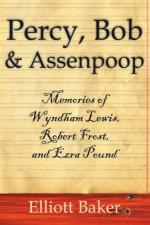|
This section contains 9,263 words (approx. 31 pages at 300 words per page) |

|
SOURCE: “Aesthetics, Politics, and the Staging of the World: Wyndham Lewis and the Renaissance,” in Twentieth Century Literature, Vol. 42, No. 4, Winter, 1996, pp. 494-515.
In the following excerpt, Stockton traces Lewis's political and philosophical development.
Wyndham Lewis is best known for what he termed his “enemy” rhetoric—a discourse that posits Lewis himself as a marginalized and persecuted member of a small group desperately clinging to “traditional value” in the face of what he defines as the encroaching flood of modernist corruption. Lewis assumes this embattled stance in Blast, the vorticist manifesto of 1914 and 1915, directing shrilly righteous anger against a variety of species of decay—materialism, philistinism, chaos, and especially democracy—which he perceives to threaten all that is or could be “worth while” in Western culture. Although all of these “corruptions” embody his growing fear of the increased social leveling and democratization that followed World War I, early...
|
This section contains 9,263 words (approx. 31 pages at 300 words per page) |

|


